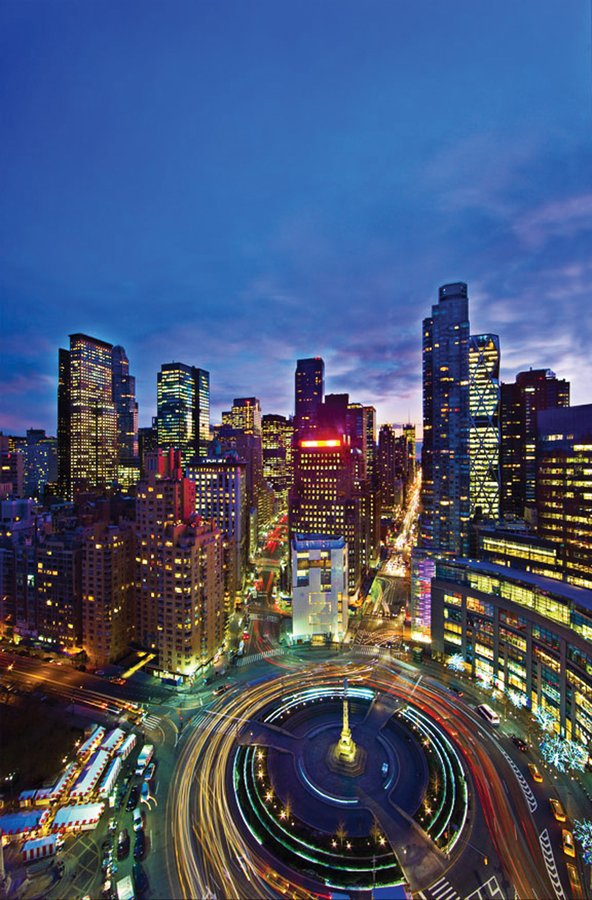Few artists would dare to try to capture the beauty of New York. After all, its cityscape is one of the most photographed, most filmed, most painted, most written about, most sung about places of all time.
Despite this artistic canon, photographer Evan Joseph was up to the challenge and, through his lens, manages to offer a fresh perspective on the familiar.
“Well, that’s always the challenge for an artist,” Joseph said recently. “How do you reinterpret the familiar? What new perspective can you bring to something people have seen or heard or experienced a million times before? It isn’t easy. And more often than not, we fail or fall short. But those rare times when you succeed, that’s when you get the most reward, both for yourself as an artist, and for the viewer or audience.”
Joseph said one challenge was figuring out “how to repeat the miracle.”
____________
Now, about 20 images from the book are on view at New York’s Tachi Gallery through January 6, 2012. The exhibit opened on Oct. 27.
While a few of the images in the book and in the exhibit where shot from the roofs of buildings, most were taken from a helicopter and owe their success to new developments in photography, aircraft technology, and trial and error.
The photos selected for the exhibit offer crisp, clear details of lights from the highest rooftops all the way down to the street, and simultaneously give the spectator a view of, say, street-level taxis and building-top gargoyles.
In addition to this detail, the photos also reveal an unexpected range of colors emanating from neon signs, headlights, car roofs, and billboards.
“Shooting at night from a helicopter has been, for the most part, impossible because generally they just don’t yield any usable results. To draw out that dynamic range and color range at night, from a helicopter, has been more or less not practical,” explained Joseph. “You end up with what looks like a field of stars. It hasn’t been until this latest generation of cameras and lenses, combined with the latest generation of military grade helicopter stabilization hardware, that you could get an exposure that could soak up enough light to give you that kind of image.”
Joseph admits that hours of trial and error were also part of the magic that made these aerial photos work. He said he had to practice with “different cameras, different, lenses, different stabilizers, different ways of attaching them together. Sometimes it would be the right lens, but the wrong camera. Or the wrong setting in the right camera. Or it might be the wrong positioning of the stabilizer, with the right camera lens and setting.”
It took a whole constellation of variables to finally get it right, said Joseph, who worked on his book project for about a year and the helicopter shots over a period of about four weeks. Once he had figured out the right mix of what he had to do to get the images right, he said his next challenge to figure out “how to repeat the miracle.”
Loftier angles and higher highs
Recognized as one of the best architectural and real estate photographers working in New York, Joseph said his commercial work couldn’t be more different than the photos in the exhibit.
His tony client list includes such customers as the Trump Organization, the Ritz Carlton, Elle Décor and Architectural Digest, in addition to celebrities Lenny Kravitz and Sting. Interestingly, it was a project Joseph did for client Bob Costas that gave him the idea for his book, “New York at Night.”
While taking some photos at Costas’s Central Park penthouse, Joseph’s interest in nighttime cityscapes grew and he set his sights on a loftier angle from the sky. Working closely with his pilot, Joseph received clearances to document incredible images and perspectives. What he eventually captured were photographs that couldn’t have been taken even from the highest skyscrapers in the city.
“New York at Night” is only the second major show to be held at the Tachi Gallery, which was opened in January by filmmaker Joseph Scarpinito.
“This exhibit grew pretty organically,” said gallery director Jane Bassolino. “It just happened that Evan had picked up a print of one of his book images and stopped by here that same day. When he showed that images to us, we knew right way that our second gallery show had to be an Evan Joseph exhibit. These photos were just that striking, just that powerful.”
Joseph’s work will be on exhibit at Tribeca’s Tachi Gallery through Jan. 6, 2012. The gallery is located at 414 Washington St., New York, NY. For more information about the gallery or exhibit, call (212) 226-6828, or visit http://tachigallery.com.
E-mail E. Assata Wright at awright@hudsonreporter.com.
